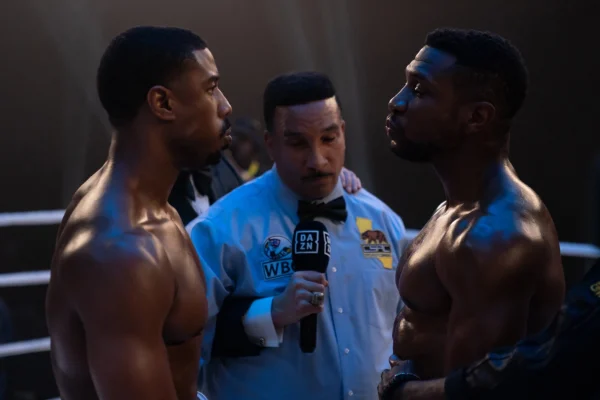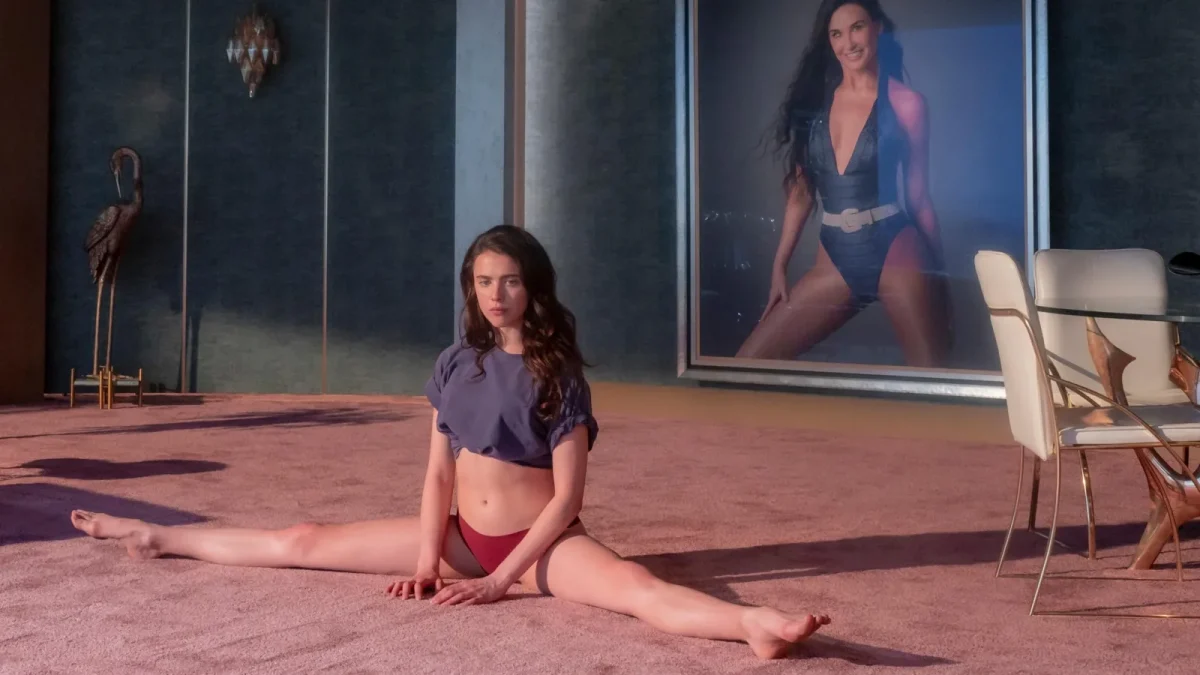
By Jazmyn De Jesus
The third installment of the Creed series presents a new take on a brother’s betrayal story that serves as a positive example of Black masculinity with plenty of anime references woven into the creative fight scenes despite shortcomings in its visuals and script.
Michael B. Jordan stars in and makes his directorial debut with “Creed III.”
While the previous two Creed films follow the same plotlines and story progressions of the Rocky films, “Creed III” differentiates slightly and arguably has a more meaningful social commentary.
Jordan incorporated much of his own influences and views with the latest installment which helped the movie as much as harming it.
Due to the fact that the prior films were written by Jordan’s longtime collaborator, director Ryan Coogler, Jordan’s attempt at mimicking the visuals and verbal cues seemed a bit awkward and at times corny.
“Creed III” attempts to be the most unique out of the series, but some directorial choices come off as odd and not intentional.
The heavily promoted “Creed III” soundtrack includes a very long and out of place cameo from singer-songwriter Kehlani, which is overly glaring.
Similarly, the product placement in this movie is not very discreet. Thankfully that did not take away from any significant character moments.
The dialogue and script is straight forward enough. However, more emotionally heavy scenes with Bianca (Tessa Thompson), Adonis Creed’s wife, could have been more fleshed out. These scenes could have also shown more of Thompson and Jordan’s acting chops and developed the story further.
The acting performances from Jordan, Thompson, and Jonathan Majors were all excellent. They brought life to what could have been a dull script.
Thompson’s character was given a very one-note role as Creed’s wife in this installment compared to the previous films. Yet, with the few lines she had, she still managed to help the audience see what was not being said.
Visually, compared to similar action-dramas that have come out in recent years, it was not very unique. However the final fight between Adonis Creed (Micheal B. Jordan) and Damian Anderson (Jonathan Majors) was definitely a highlight.
The two characters started off as childhood friends who felt more like brothers to each other. Both were involved in the underground boxing scene as adolescents, before Damian was thrown in prison for pulling a gun while defending a young Adonis during an altercation.
After being released from prison, Damian uses Adonis as a resource to get ahead and steal the title of world champ from Adonis’ trainee which leads to Adonis challenging Damian himself.
In the third act, the two finally go head-to-head with far more interesting visual choices than earlier fight scenes. The scene makes visual allusions to both “Dragon Ball Z” and “Naruto,” animes that have been cited by Jordan as inspirations. Although it does not look as clean as other CGI-heavy scenes we see nowadays in action movies, it was a great visual representation of the relationship and emotional intensity between the two men fighting in the ring.
Both Adonis and Damian have moments of vulnerability throughout the movie. The audience is given glimpses of their pasts and the two different ways they deal with their shared trauma, which is really the heart of the film.
Seeing Adonis Creed confront his mother about the pain she caused him and then finally being open with his wife during the emotional climax of the movie was very touching and added more meaning to why he chose to fight Damian.
At the close of the story both characters tell each other that they are absolved from blame because they were just children who were treated and seen as grown men, causing them to make mistakes that altered their lives forever.
Overall, “Creed III” is a 6 out of 10. It was a story with heart and a deeper meaning that could be analyzed, but it falls victim to its predecessors and other similar films in its overdone visuals and at times awkward screenplay.












TK • Mar 22, 2023 at 6:02 pm
Amazing how the storyline of a deaf daughter and deaf visibility is conveniently erased as if that character doesn’t exist or have any weight to the storyline… in this review. Bravo to you!